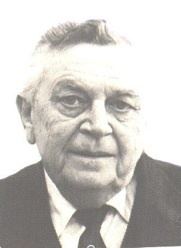Name Robert Triffin | Role Economist | |
 | ||
Died February 23, 1993, Ostend, Belgium Books Gold and the Dollar Crisis: The Future of Convertibility Education | ||
Robert Triffin (5 October 1911 – 23 February 1993) was a Belgian American economist best known for his critique of the Bretton Woods system of fixed currency exchange rates. His critique became known later as Triffin's dilemma.
Contents
Life
After completing his undergraduate studies at the Catholic University of Leuven, Triffin, a Francophone Belgian, went to the US and received his Ph.D. from Harvard University in 1938 and taught there from 1939 until 1942. He held positions in the US Federal Reserve System (1942–1946), the International Monetary Fund (1946–1948), and the Organisation for European Economic Co-operation (1948–1951), now the OECD. In 1951, he became a professor of economics at Yale University, where he also served as Master of Berkeley College from 1969 until 1977.
Triffin became a US citizen in 1942. He reclaimed his Belgian citizenship in 1977 and returned to reside in Europe. There, he was a staunch supporter of European integration and helped to develop the European Monetary System and supported the concept of a central bank, which developed as the European Central Bank.
Bretton Woods critique
In 1960, Triffin testified before the United States Congress and warned of serious flaws in the Bretton Woods system. His theory was based on observing the dollar glut, or the accumulation of the United States dollar outside the US. Under the Bretton Woods system, the US had pledged to convert dollars into gold, but by the early 1960s, the glut had caused more dollars to be available outside the US than gold was in its Treasury.
In the post-war era, the US had to run deficits on the current account of the balance of payments to supply the world with dollar reserves that kept liquidity for their increased wealth.
However, running continuing deficits on the current account of the balance of payments resulted in an ever-increasing stock of overseas held dollars, eroding confidence in the belief that the dollar would remain convertible into gold at the Bretton Woods parity rate of $35 per ounce.
Triffin predicted that the system would not be able to maintain both liquidity and confidence, a theory later to be known as the Triffin dilemma. His idea was largely ignored until 1971, when his hypothesis became reality, forcing US President Richard Nixon to halt convertibility of the United States dollar into gold, an initiative known colloquially as the Nixon Shock), which effectively ended the Bretton Woods System.
A fundamental reform of the international monetary system has long been overdue. Its necessity and urgency are further highlighted today by the imminent threat to the once mighty U.S. dollar.
